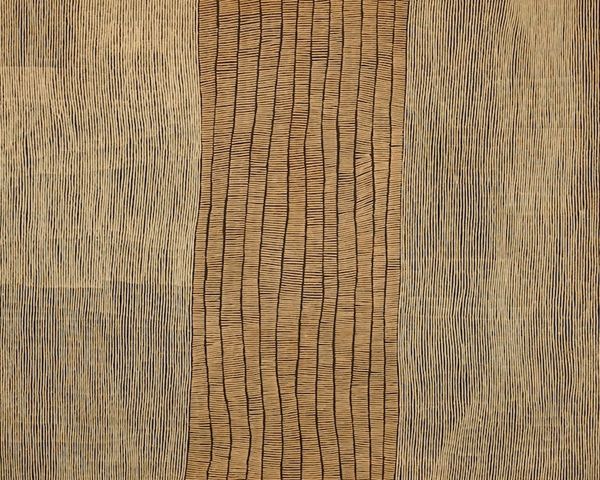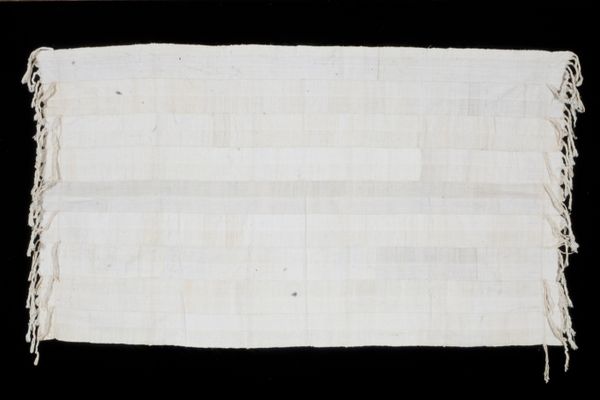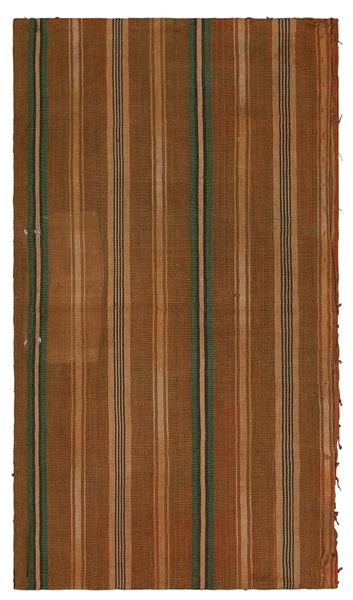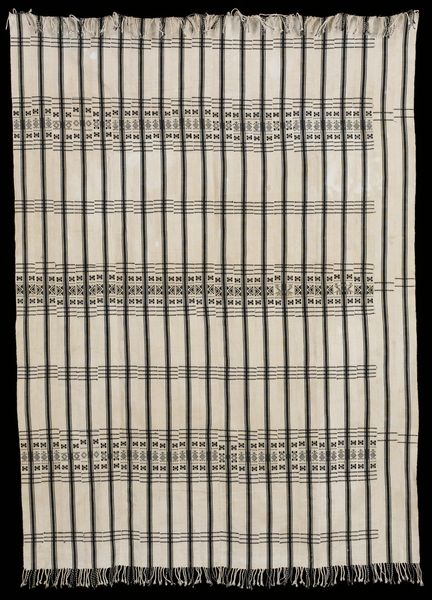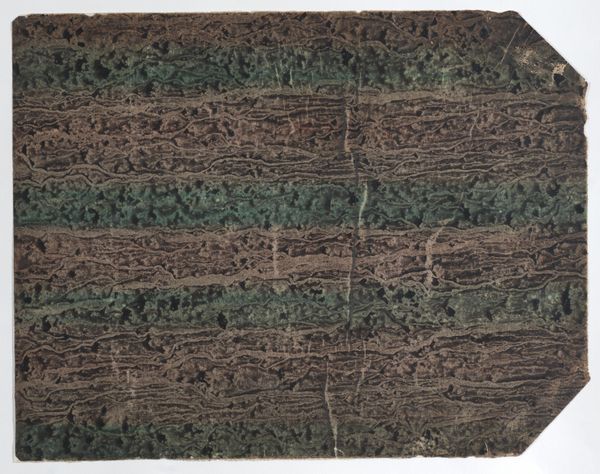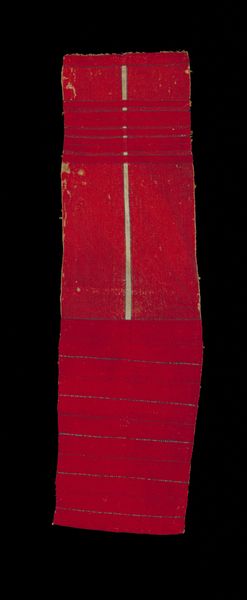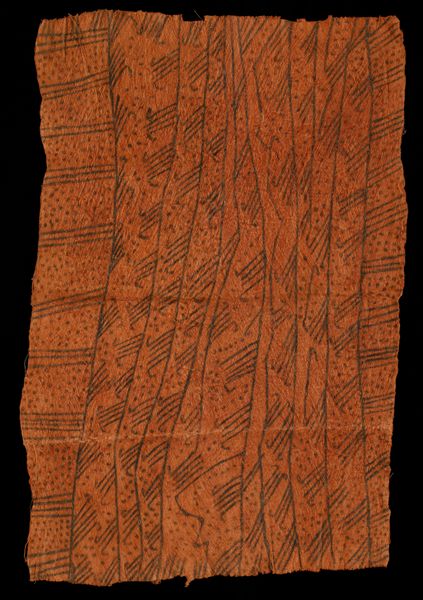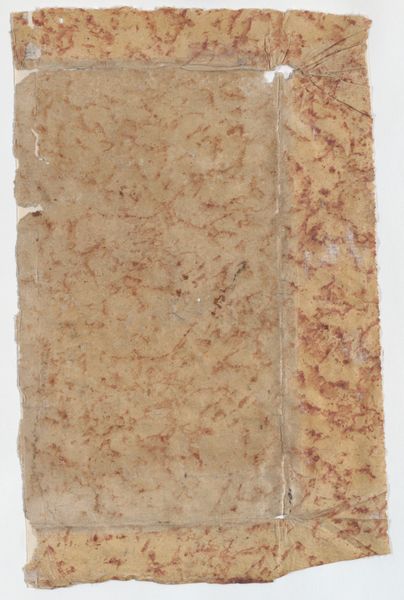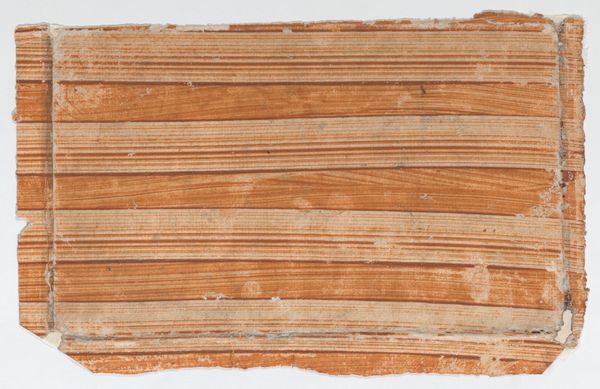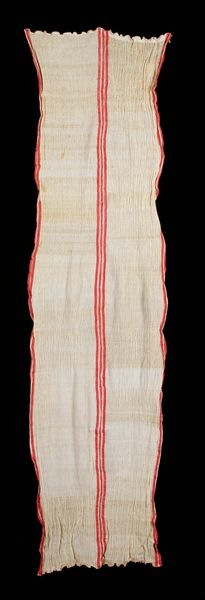
weaving, textile, cotton
#
weaving
#
textile
#
line
#
cotton
Copyright: Public Domain
Curator: This is a divan cover from around 1950, woven from cotton, now residing here at the Minneapolis Institute of Art. Editor: It's very simple at first glance – almost soothing, really, with those muted creams and browns in such a regular pattern. The narrow stripes evoke a quiet, domestic sort of space, but one with some artistry nonetheless. Curator: The horizontal lines are paramount, of course; their very repetition constructs the artwork's visual language. Yet, consider the slight variations in the thickness and texture of these lines—a delicate disruption that provides visual interest within the rigid structure. Editor: And who was making these textiles at mid-century? What roles did gender and labor play in the creation of such domestic objects? Often these objects belie significant cultural histories where textile work was done by women at the periphery of artistic consideration. Were they acknowledged as designers, and how was the practice of weaving viewed by institutions at this time? Curator: Those considerations, while valid, diverge from examining the object itself. I am more interested in the relationships between line and ground, the way the subtle sheen in some sections catches the light and defines the aesthetic experience. It’s the material object offering, not external histories. Editor: I think we miss out when we don't question those assumed distinctions. This weaving can spark dialogues about the lives of textile artists in that era and open the floor to considering how these traditions, largely pushed aside, have historically offered meaningful perspectives. What stories are embedded into these common horizontal striations that could speak back to ideas of value, gendered work, and even post-war economy? Curator: And conversely, appreciating it structurally grants another sort of entry, without necessitating it be read as simply a product. In observing the patterns and appreciating how the warp and weft create both cohesion and delicate contrast, that is more my speed. Editor: Well, I see what you did there – "warp" and "weft," good one. It makes me reconsider these domestic works as untapped zones, so I think for me, seeing beyond their material composition to understand them within the history, politics and culture they originated in makes art matter. Curator: As for me, attending carefully to what it is in front of me is rewarding enough!
Comments
No comments
Be the first to comment and join the conversation on the ultimate creative platform.
